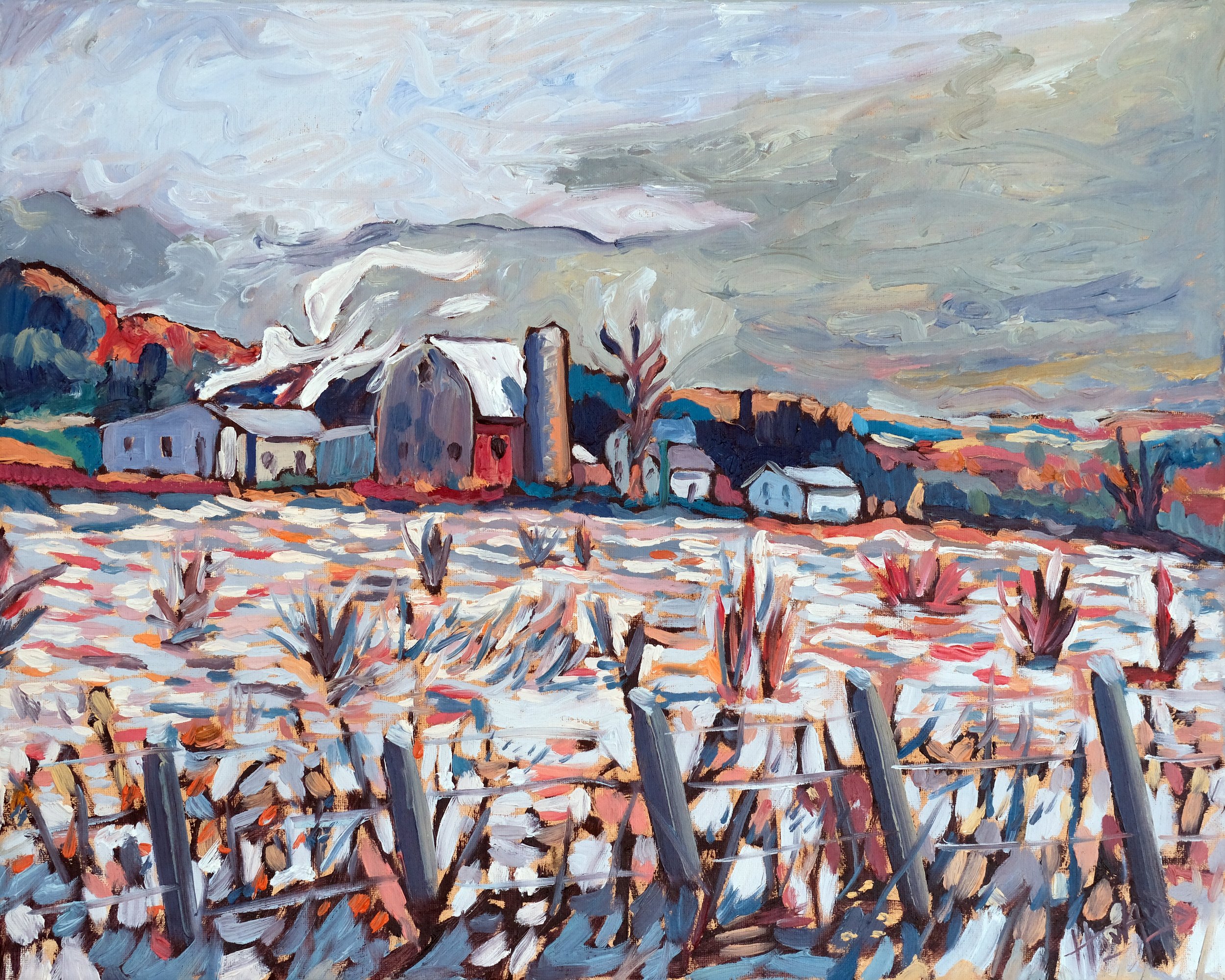Capturing the Beauty of Wisconsin's Driftless Region: Tips and Techniques for Painting in the Post-Impressionist Style
Wisconsin's Driftless Region is a truly unique and beautiful place to visit, with its rolling hills, winding rivers, and picturesque valleys. It's no wonder that it has inspired so many artists, including me, over the years, and continues to do so today. Although the region draws many en plein air artists, I chose post-impressionism as my personal style. Post
Post-impressionism was a movement that emerged in the late 19th century, following the more traditional Impressionist movement. While Impressionists focused on capturing the fleeting, ephemeral qualities of light and color, post-impressionists were more concerned with the emotional and expressive potential of their art. They often used bold, expressive brushstrokes and vibrant, saturated colors to convey their own personal vision and emotions. Something which I feel really brings out the heart and soul of the Driftless region.
If you want to follow in my style here’s some tips for painting scenes in Wisconsin's Driftless Region:
Focus on the emotions and atmosphere of the scene: One of the key characteristics of post-impressionist art is the way it captures the emotional atmosphere of a scene. Whether you're painting a tranquil valley, a rushing river, or a towering bluff, try to convey the mood and emotion that you feel when you're in that place.
Use bold, expressive brushstrokes: Post-impressionist artists often used thick, expressive brushstrokes to give their paintings a sense of energy and movement. Consider using a variety of brush sizes and shapes, and experiment with different brushstrokes to find the ones that best capture the mood and atmosphere of your scene.
Experiment with color: Post-impressionists were known for their use of vibrant, saturated colors, often contrasting them in bold ways to create a sense of tension and drama. When painting in this style, don't be afraid to use strong, bold colors, and consider using complementary or contrasting colors to create visual interest. Don’t be afraid of a tinge of green in the sky, or red in the grass. We post-impressionists don’t give it a second thought!
Consider the composition: The composition of your painting can have a big impact on its overall impact and emotional impact. Think about the placement of different elements within the frame, and use techniques like placement, repetition, and contrast to create a dynamic and balanced composition.
Emphasize the texture and form of the landscape: One of the key differences between Impressionism and post-impressionism is the way that the latter emphasizes the texture and form of the landscape. Consider using impasto techniques, layering paint to build up texture and form, or using thick, expressive brushstrokes to create a sense of depth and dimensionality.
By using these techniques and approaches, you can create beautiful, expressive paintings of Wisconsin's Driftless Region that capture the unique beauty and atmosphere of this special place. Whether you're a seasoned artist or just starting out, the post-impressionist style can be a great way to bring your own personal vision to life and create meaningful, evocative art.

